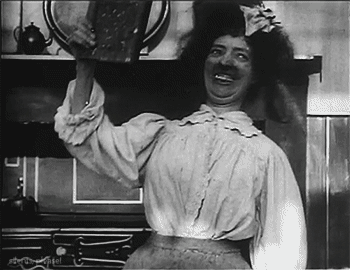Dating back as early as the 19thcentury, film production has transformed massively throughout the decades. It was created through the “discovery of illusion of motion”, where many individual photographs were put in a sequence to create the illusion that the images were moving. The earliest films showed scenes of everyday life such as people waiting for an approaching train, which then transformed into staged performances. The importance of film is, of course, entertainment and furthering technological advance along with making profit, however, in a historical context, the importance is that it provides historical evidence, as these early films disclose subconscious assumptions of past society, which transforms throughout the century.
Early cinema occurred between 1896 and 1903. These films were short and formally simple, with a dominance of non-fiction. These films were usually exhibited at fairgrounds or music halls, or anywhere where a screen could be fitted along with the room being darkened. Early cinema then transitioned into ‘Transitional Cinema’, as the industry of production expanded throughout the USA and Europe. These were then exhibited in Nickelodeons (a picture theatre with an admission fee of one nickel in the US) from 1905, and also picture theatres dedicated for these productions. These films during the transitional cinema period had a longer duration with more complex fictional storylines. They were still silent during this period, only with music and dialogue titles to show any explicit narrative, of course along with the acting. The two periods of cinema show the advance in production and industry, as new ideas were being introduced.


Many films have significance. One factor being the “intrinsic excellence” of a film due to the content, thought provoking nature and “outstanding by artistic criteria”. Especially in the early cinema period, as film-making was such a technological advance. A second factor of significance would be their influence on other films, whether this be creating a new or changing a genre, inspiring other film makers to try something new or becoming so popular that imitations are created in future films. Other films are significant just because they represent trends of the time
There is so much more to film and cinema than audience entertainment and there are several ideas of different types of explanation in film history such as the political and cultural history which concentrates on the role of film and cinema in society, as in its early days, it was thought to target a working-class audience. The aesthetic history concentrates of cinema as an art form, for example, the style and genre. The technological history of cinema focuses on the different medium of film and the technology used throughout the years, as it was such a technological revolution in the late nineteenth century.
To put it simply, film history looks into the ever-changing ways of entertaining and the origins of an industry that is now enormous and extremely significant to society in this day and age.
This is a largely impressive and wide-ranging blog post that tracks film history. From the outset it is clear that you have elected primarily to focus on a historiography of film, which is a perfectly valid approach, although it may also be fruitful to open the question up and place more emphasis upon questioning the concept of history itself.
The piece is well-written generally, but there are some avoidable typos and syntax issues that as a group you can iron out. Awareness of context is especially strong and your use of gifs is a very welcome feature of the post.
I would query the stress you place on entertainment, however, – yes film is certainly that, but as you make clearer near the end of the post it is much more too (think of Ingeborg Holm for instance).